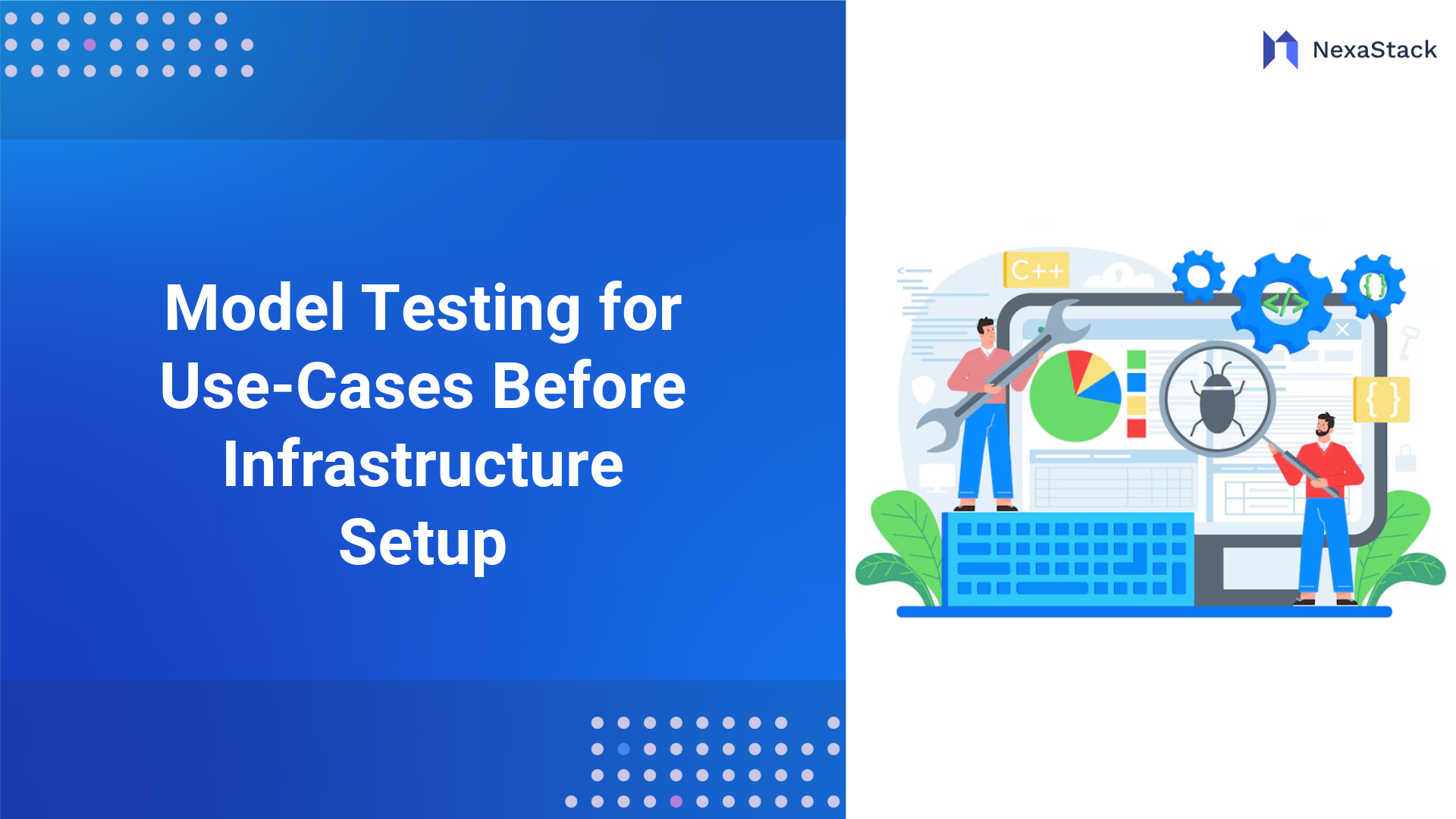Before investing in infrastructure for machine learning, organizations must prioritize AI model experimentation to ensure alignment with business objectives and technical feasibility. Rushing into infrastructure deployment without validating models can lead to costly missteps, inefficient resource usage, and delayed ROI. Instead, a well-structured AI deployment strategy should begin with experimenting models tailored to your specific use case.
By leveraging LLMOps platforms and cloud-native environments, businesses can conduct low-cost, scalable model validation before making long-term infrastructure commitments. This enables teams to benchmark model performance, evaluate real-world data fit, and iterate faster—all while reducing overhead.
Whether deploying generative AI, fine-tuning LLMs, or testing predictive analytics models, early experimentation supports cost-effective AI development and more informed infrastructure planning. In this guide, we’ll cover why experimenting is essential, how to do it efficiently, what infrastructure to consider after validation, and the future trends shaping AI model testing workflows.
This blog explores why experimenting with models first is crucial, how to test them effectively, and the tools available for evaluating performance before making an infrastructure investment.
Importance of Model Experimentation
Before investing in infrastructure, businesses should ensure their AI/ML models are well-optimised, accurate, and suitable for production use. Skipping the experimental phase can lead to wasted resources, increased costs, and inefficient workflows. Here’s why experimentation is essential:
- Cost Efficiency: Investing in high-performance GPUs, cloud resources, or on-premise infrastructure can be costly. Experimenting allows you to optimize models before scaling up.
- Performance Validation: Testing models ensures they meet accuracy, latency, and scalability requirements before deployment.
- Flexibility in Model Selection: By experimenting, you can explore multiple architectures and choose the most suitable one.
- Risk Mitigation: Avoid potential failures by identifying limitations and bottlenecks early in development.
- Iterative Model Improvement: Experimentation allows for continuous tweaking and refinement, leading to better overall model performance.
Approaches to Testing AI Models for Specific Use Cases
 Figure 1: Testing AI Models for Specific Use Cases
Figure 1: Testing AI Models for Specific Use Cases
- Choose a Prototyping Environment
Instead of deploying models directly on high-cost hardware, use low-cost prototyping environments to test and refine models:
Prototyping environments also offer pre-configured environments with libraries like TensorFlow, PyTorch, and Scikit-Learn, allowing quick experimentation and debugging.
- Utilize Pre-Trained Models
Building models from scratch requires time and resources. Instead, leverage pre-trained models to validate whether a model fits your use case before optimizing further:
Pre-trained models save computational resources and allow developers to fine-tune models instead of building them from scratch. This is especially useful when working with large datasets or complex architectures.
- Use Lightweight Frameworks for Testing
Deploying a full-fledged model might be unnecessary for early experiments. Instead, use lightweight frameworks that allow rapid prototyping:
These frameworks allow for easy deployment and testing on minimal hardware, reducing the need for expensive resources during early development.
- Optimize Model Performance Before Scaling
Even if your model achieves satisfactory accuracy, it may not be optimal for production. Optimization techniques can help reduce costs and improve efficiency:
- Benchmark Model Performance
Use benchmarking tools to assess whether the model meets performance and scalability requirements before investing in infrastructure:
Benchmarking ensures that the chosen model configuration is suitable for large-scale deployment and prevents potential bottlenecks.
Infrastructure Planning After Successful Model Validation
Once your model has been optimized and validated, it’s time to decide on the infrastructure. Key considerations include:
-
Compute Resources: Does your model require CPUs, GPUs, TPUs, or specialized accelerators like FPGAs?
-
Deployment Environment: Are you deploying via Kubernetes, serverless architectures, or dedicated ML pipelines?
-
Energy Efficiency: Does the infrastructure align with sustainability goals to reduce energy consumption?
Evolving Trends in AI Model Experimentation
Federated Learning
Federated learning is a technique that allows multiple devices or nodes to train models locally without sharing raw data. This improves privacy and security while leveraging decentralized training. It benefits healthcare, finance, and IoT applications, where data privacy is a top concern. Federated learning enhances security while enabling AI advancements by reducing the need to transfer sensitive data to centralised servers.
Automated Machine Learning (AutoML)
AutoML automates model selection, hyperparameter tuning, and feature engineering, reducing the need for expert data scientists. With advancements in tools like Google AutoML, H2O.ai, and AutoKeras, businesses can experiment faster and achieve high-performance models with minimal manual intervention. As AI adoption grows, AutoML becomes a powerful tool for democratizing machine learning across industries.
Serverless ML Architectures
Serverless computing allows machine learning models to be deployed on demand without managing dedicated infrastructure, reducing operational costs and improving scalability. Platforms like AWS Lambda, Google Cloud Functions, and Azure Functions enable developers to deploy inference models cost-effectively. As serverless technology evolves, businesses can seamlessly integrate ML into their workflows without complex infrastructure management.
AI Model Compression
AI model compression techniques such as pruning, quantization, and knowledge distillation are advancing rapidly. These techniques help deploy AI models on resource-constrained devices like smartphones and IoT edge devices. Efficient model compression ensures faster inference and lower power consumption, making AI more accessible for mobile applications. With the rise of AI-powered consumer devices, compression techniques will play a key role in optimizing model performance.
Conclusion: Building Confidence Through Early Experimentation
Experimenting with AI/ML models before investing in infrastructure ensures cost efficiency, optimal performance, and scalability. Developers can make informed infrastructure investments while mitigating risks by leveraging cloud sandboxes, pre-trained models, lightweight frameworks, and benchmarking tools.
Before making large-scale commitments, ensure your model is accurate, efficient, and well-tested. This approach saves time, reduces costs, and leads to more successful AI/ML deployments.




